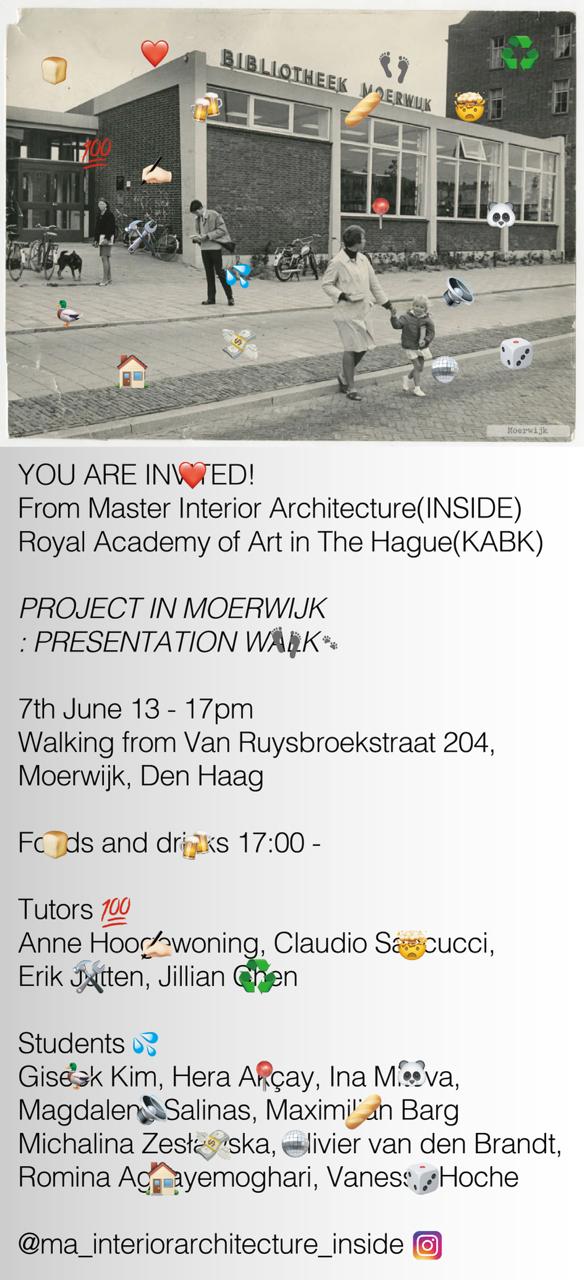Studio URBAN is the third studio of the first year which took place in Moerwijk, a post-war residential district in The Hague where many changes are in the making. This studio, lead by Claudio Saccucci of Studio Verter, had no explicit assignment or question: the students came up with their own assignment that led to a site specific spatial intervention. Each project is the result of an attentive observation of the district where personal fascinations, working methods and narratives are explored and developed alongside each other. In the area there are many hidden spatial potentials, such as the many vacant commercial ground floors or communal gardens. Locations like these are natural magnets for the collective life of the neighborhood.
In the first part of the studio the students used a variety of research tools to build knowledge about, and with the neighborhood. From this, they filtered relevant challenges which intrinsically relate to the relationship that people, as users, have with their immediate living environment. From these found challenges, the students developed a series of spatial design interventions in the public realm to strengthen spaces where people come together and communities emerge and to reinforce the social networks of Moerwijk.
Moerwijk was first conceived and designed by architect H.P. Berlage (1908) and further developed by W.M. Dudok (1948). After its construction the area became a working class neighborhood. Its green and generous architecture was designed according to modernist principles of efficiency. During the 1980s and 1990s a new influx of inhabitants put pressure on the existing social and service structures. Nowadays the neighborhood struggles to keep up with other parts of the city. Lack of welfare and basic services, levels of social and financial inequality, unemployment, substance abuse and criminality are just few of the issues the area is experiencing. As many other neighborhoods, Moerwijk can be read as a fragile urban zone, where the very networks of support are thin and precarious. From this follow questions like: What are the fruitful contributions that we as designers can bring to such areas? What is the role of design in the absence of stability? For whom do we design? What are the core values at the base of our design practices? How do we rethink the very tools that the designer employs to craft, think and create?
